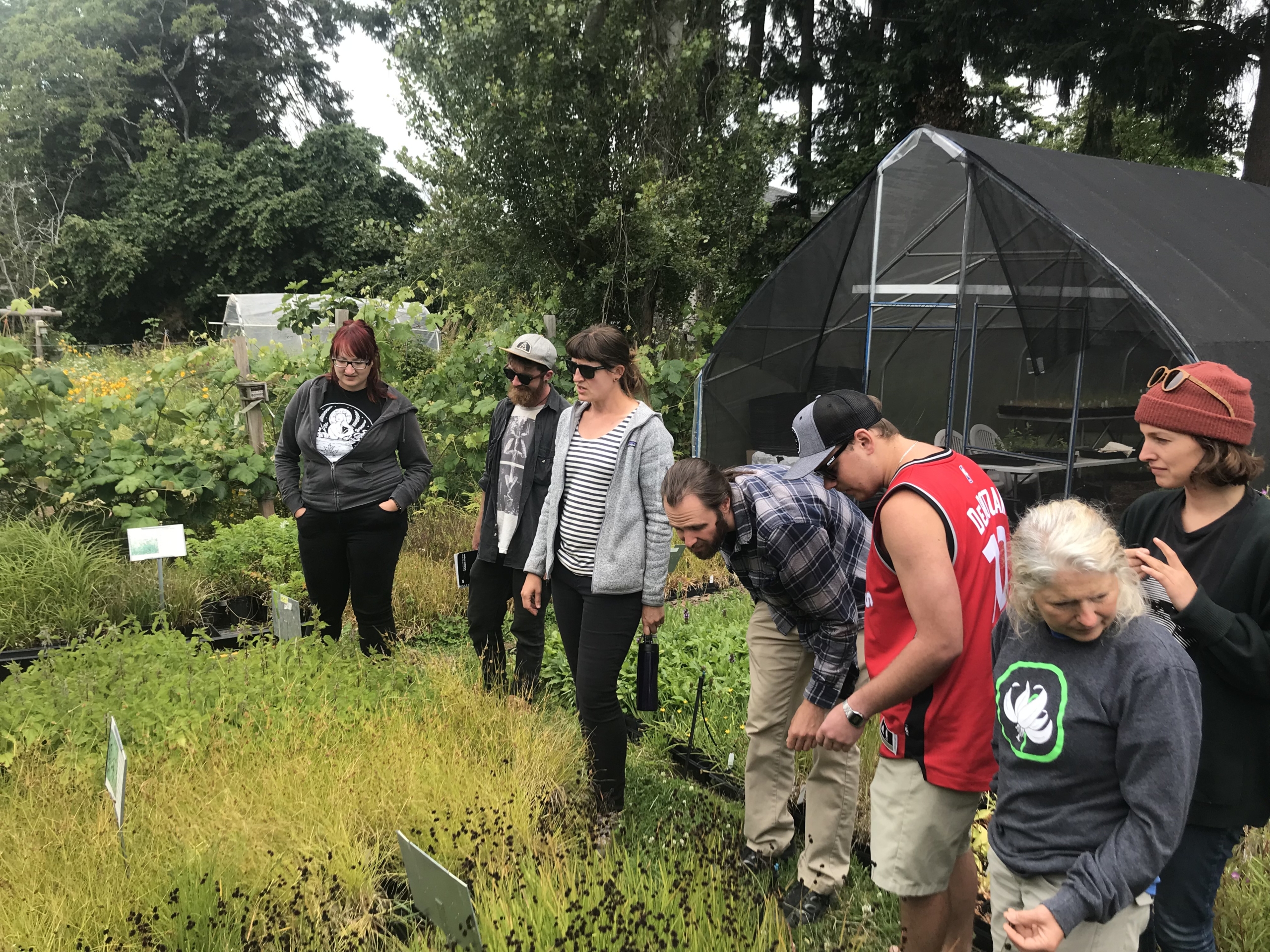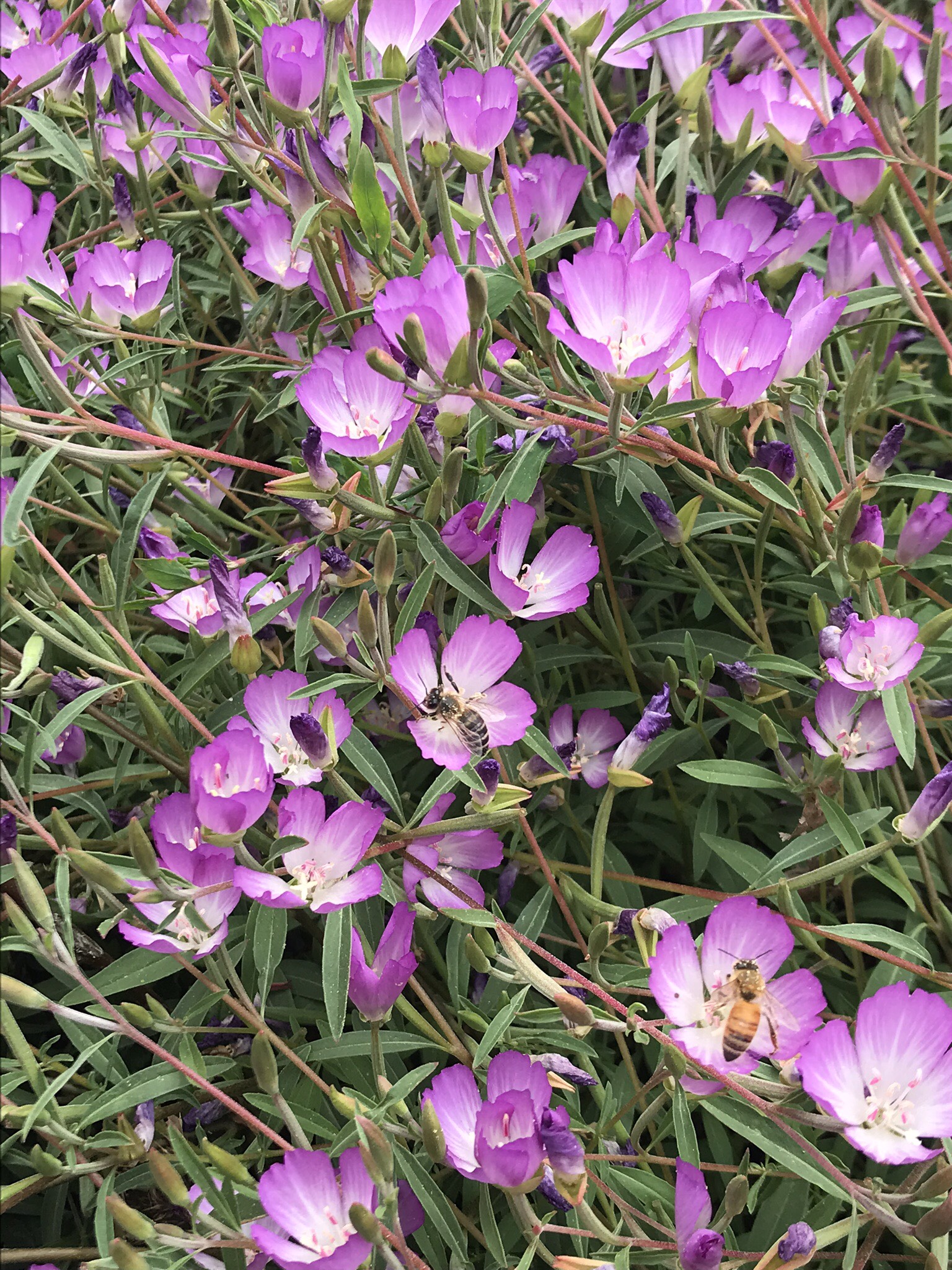Environmental Stewardship & Native Plants
Student Blog Post
By Jakes Giles & Shannon Grady
 Environmental stewardship refers to the responsible use and protection of the natural environment through conservation and sustainable practices. Before our week break, our class spent the day with Kristen Miskelly, a local biologist with specialized knowledge on the botany and ecology of the Saanich peninsula. Kristen, along with her husband, James, started Saanich Native Plants nursery in 2013. There, they organize workshops, courses, events, and consultations to educate the public on the vital roles and functions of their own backyards and neighbourhoods.
Environmental stewardship refers to the responsible use and protection of the natural environment through conservation and sustainable practices. Before our week break, our class spent the day with Kristen Miskelly, a local biologist with specialized knowledge on the botany and ecology of the Saanich peninsula. Kristen, along with her husband, James, started Saanich Native Plants nursery in 2013. There, they organize workshops, courses, events, and consultations to educate the public on the vital roles and functions of their own backyards and neighbourhoods.
In the classroom, Kristen introduced a brief geological history of Saanich and Victoria that was unfamiliar to us. Victoria, so lush and perfect gardening, is often put into the ‘rainforest' category, along with the rest of Vancouver Island and British Columbia. Thirteen thousand years ago (about six thousand years after the last glacial period), Victoria looked more like the wild west: dry grass, pines, and roaming bison.
Eight thousand years ago, those rolling plains were warmer than our climate today, and Indigenous peoples across the peninsula and into the Cowichan Valley planted camas. The camas harvest is one of the oldest agricultural histories on earth-- it's been around since agricultural methods were developing in Mesopotamia. Camas meadows were routinely managed and burnt, and many of these meadows became what we now call Garry Oak meadows or ecosystems. The rain shadow cast by the Olympic Mountains actually separates the southern tip of Vancouver Island from the ‘rainforest' classification, made regular harvests possible, and provided the perfect growing conditions for unique prairie plants. As Kristen said, “We've been a dry place for about ten thousand years.”
In the afternoon, the class had the opportunity to visit Saanich Native Plants nursery and take a look at the work Kristen and her team are doing out there to promote ecosystem restoration and the importance of biodiversity. We encourage any gardener interested in native plants to visit the nursery. As you walk up the front driveway, on your right will be the nursery sales lot. Just the size of an average front lawn, it contains a nice variety of native plant species, from common snowberry to the big-leaf maple, and many perennials such as licorice fern, stonecrop, camas and satin flower, just to name a few. Along the surrounding fence-line were native shrubs planted as an informal hedge, imitating thickets of brush found in our native environment, in turn providing a “natural” habitat for native wildlife.
Behind the main building are a few acres of plots used to grow native species,and other areas have been sectioned off for other like-minded growers, creating a co-op type farm. Although they weren't all growing native species, it created a nice homey, easy-going feeling about the farm. Beyond the farm plots are a couple of on-going ecosystem restoration projects that they maintain and monitor through the help of volunteers. The first and largest area is open grassland with a medium-sized pond, about an acre in size and backing a very populated neighbourhood. We can't imagine the amount of hard work that went into creating that space: once overrun with invasive species such as himalayan blackberry, broom, and yellow flag iris, Kristen and dedicated volunteers have worked tirelessly to recreate a native environment. Just think of the Native Plant Garden at the HCP, and the constant maintenance it takes to keep a space looking natural and untouched.
Kristen's passion resonated strongly with our class. Throughout the day, we enjoyed lively discussions and debates, and contemplated making native plants a focus of modern horticulture in Victoria. Native plants are the right plants for this dry place, and what could be better in the garden than a diverse display in the spring and summer, happy pollinators, and zero watering?
Check out Saanich Native Plants to learn more about plants and seeds, native pollinators, and the important work the Miskellys are doing in our community.


